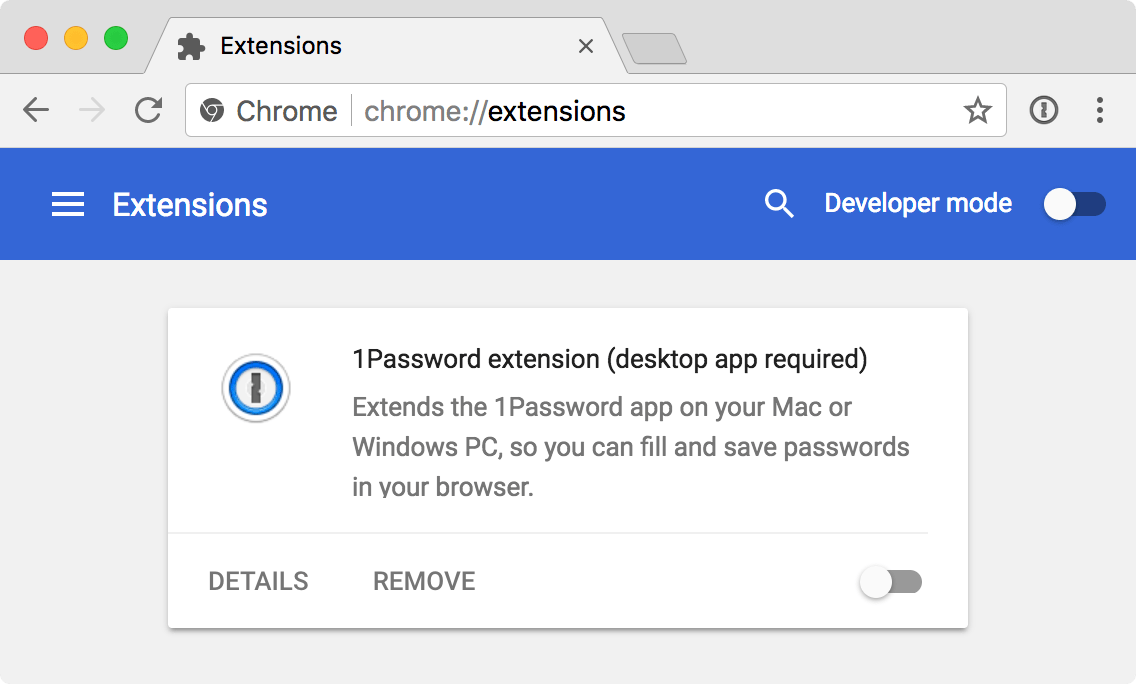

- #How do i delete 1password extensions in chrome how to
- #How do i delete 1password extensions in chrome install
Look at the publishing date of each review. Does an extension have reviews? Are they all 5-star reviews? That's suspicious.
#How do i delete 1password extensions in chrome how to
These are big red flags if you know how to identify legit ones. That means it could be sending data, your personal data, to some server. Permissions may give important clues an add-on for a visual enhancement (like a theme) shouldn't require permissions like "Communicate with cooperating websites".
#How do i delete 1password extensions in chrome install
When you click the install button, read the pop-up which lists the permissions the extension requires. Obviously, developers and companies with ill-intent may add whatever they like to the privacy policy.

I'll give you a hint: It's never acceptable. If the policy is upfront about the data they collect, think about if it's worth using the extension at the cost of privacy. Your browser should highlight the sentences which contain the word and you should read what it says. Use Control + F and search for words like data, collect, track, personal, etc, in privacy policies. You accept the policy the second you install the extension. But it may exist as a loophole for the developer to get out of a legal dispute, should one arise. This is perhaps the most overlooked one? Who reads the privacy policy? You should, because unlike website registrations or software agreements, you're not shown the privacy policy for an extension when you install it. Pay attention to the developer name and click on it to see their other extensions.

Sometimes, people get fooled by these and think it's from the company which makes the actual software. Malware developers resort to all sorts of tricks to infect users, and one of these is to use the logo (icon) of popular brands or applications. Irrelevant screenshots or very odd descriptions, on the other hand are all tell-tale signs of a malicious extension. Bad grammar or spelling mistakes may not be used as an indicator. Broken grammar or English may be seen as warning signs but since developers from all over the world publish extensions on the Store, some may be written by non-English natives. Web Store pageĪnalyze the extension's listing and see if it rings some alarm bells. Check out Martin's guide linked above for information on how to do that. Users who known JavaScript may also check the source of the extension. It is often easier to determine if an extension is shady or outright malicious if you have installed it as it may be the cause for visible unwanted changes or activity such as hijacking search engines, displaying advertisement or popups, or showing other behavior that was not mentioned in the extension's description. We will focus on steps that you may undertake before installing extensions.


 0 kommentar(er)
0 kommentar(er)
